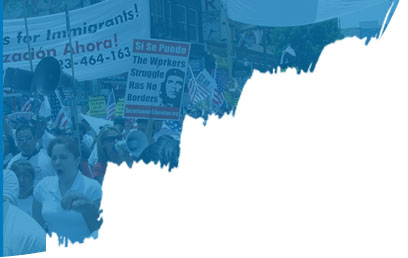
Raising Awareness is Key to Fighting Trafficking
The 2007 film Eastern Promises shined a light on the horrors of human trafficking – in this case, a forced prostitution ring run by an organized crime family. A pregnant fourteen-year-old girl walks into a London pharmacy and, in broken English, begs for help. Later, after she dies during childbirth, her journal reveals that she was one of many young women from poor, rural villages in Russia who had been lured to the UK with promises of a better life. Instead, they were drugged, imprisoned and repeatedly raped by the mobsters and their clientele. No doubt countless people left movie theaters with a new awareness of the insidiousness of trafficking and a desire to help eradicate it. They also probably wondered what they, as ordinary citizens, could possibly do (the heroes in the film included undercover agents from Scotland Yard and the FSB, Russia’s chief security agency). The truth is, joining the fight against trafficking is simpler than we think. It involves doing something most of us already do each day: sharing information online.
Obviously prevention is the number one priority, and the best way to do this is by increasing public awareness around trafficking and the often subtle signs that it is happening in our communities. Traffickers operate in the shadows, preying on the most vulnerable among us – usually children and teens who feel powerless and unprotected. Most times, they do not even know they are being trafficked, which is what criminals count on, particularly when they are attempting to lure victims over the internet. Posting, both online and in real life (i.e. schools), about traffickers’ “grooming” techniques will help children and teens recognize and avoid these interactions. Moreover, adults will be more likely to notice when a person has been trafficked (i.e. a child who is always home during school hours or a nail salon worker who seems afraid of their manager) and report it to the authorities.
The sharing of information is also an essential component in recovery from trafficking. As we covered in a previous post, moving from victim to thriver is a complex process that is both physical and emotional. Removal from the immediate danger is a critical first step; however, in order to rejoin society and reclaim their lives, trafficked persons must come to terms with their experience. This means understanding why they were vulnerable to the traffickers in the first place (i.e. low self-worth, abuse or neglect in their homes, and/or financial hardships), and that what happened to them was not their fault. Through awareness and mentorship, they can also acquire healthy coping mechanisms to deal with life challenges in a healthy way, spot predators moving forward and, eventually, help others who have been in the same situation.
Bottom line, traffickers count on our inability to police every street corner and social media platform; however, we do not have to in order to fight trafficking; nor do we have to be policymakers and or members of law enforcement. In the end, it may be the sharing of knowledge that makes the biggest difference, and this is something everyone can do, even if it’s just taking a second to share this post with their networks.
